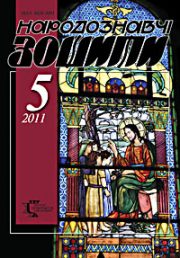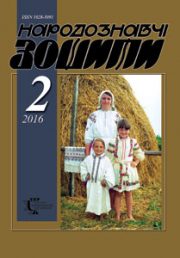The Ethnology Notebooks. 2023. № 2 (170), 419—425
UDK[069:908](477.87+438+437.6)-051″1930/1939″
DOI https://doi.org/10.15407/nz2023.02.419
GAKH Iryna
- ORCID ID: http://orcid.org/0000-0002-5627-7039
- Ph. D in Art History,
- Head of Postgraduate and Doctoral Studies,
- Lviv National Academy of Arts,
- 38, Kubiyovycha Street, Lviv, Ukraine,
- Contacts: e-mail: gachiruna@gmail.com
Abstract. Introduction. Scientific work «Lion Getz — museum worker and «Lemkivshchyna»: Second World War» is a continuation of the «Lion Getz — museum worker: little-known pages of the museum «Lemkivshchyna» in Sanok 1930—1939». The Ethnology notebooks. 2022 № 1 (163). Before the beginning of the Second World War, two museums worked in Sanok: «Lemkivshchyna» and the Museum of Sanok Land(Muzeum Ziemi Sanockiej), which collection consisted of an assemblage of valuable historical and artistic monuments, a library, an archive located in the premises of the ancient castle. Until 1939, the «Lemkivshchyna» museum occupied two rooms in the building of the Greek Catholic Church of St. Trinity owing to Lion Getz — a well-known artist in Sanok, a teacher, and an active participant in the social and cultural life of the town. In the interwar decade, «Lemkivshchyna» had been actively developing: the institution held events in Polish and Ukrainian museums, replenished the collection with monuments of Lemko culture; employees of the institution were involved in archaeological processes, restoration, and scientific work, etc.
With the beginning of the Second World War, the activities of the Polish and Ukrainian museums were reformed. In the fall of 1939, the «Lemkivshchyna» Museum and the Museum of Sanok were incorporated into one organization, which was entrusted to Lion Gets.
The activities of the «Lemkivshchyna» museum during the Second World War are presented for the first time by its director — Lion Gets in his memoirs, the artist described in details all the events that happened in the life of the institution. The purpose of the article is to highlight the hitherto never made public facts of Getz’s professional activity as the director of the Museum of Sanok during the German occupation.
The object of the research is the work of «Lemkivshchyna» in 1931—1939 and the museum activity of Lion Getz at that time.
The territorial and chronological boundaries of the study are clearly defined: the city of Syanok, 1939—1944.
In the article were used the method of historical reconstruction and cultural analysis.
Keywords: museum «Lemkivshchyna», occupation authorities, collection of monuments, archeology, museum expo sitions.
Received 1.03.2023
REFERENCES
- Getz, L. Museum worker: little-known pages of the museum «Lemkivhchyna» in Sanok 1930-1939. The Etnology Notebooks, № 1 (163), 2022. 57-64 s. [in Ukrainian].
- Getz, L. (1930—1944). Books-Memories: in 2 books (Vol. 1, 2). Rome: Vid-vo oo. Vasiliyan. Syanok [in Ukrainian].
- Archive of the Historical Museum in Syanok. The book of minutes from the General Meetings and meetings of the «Lemkivshchyna» Society in Syanok. Syanok. (1930—1939).
- Institute of National Remembrance (IRN), 010/10948/4-8 [in Polish and Ukrainian].






